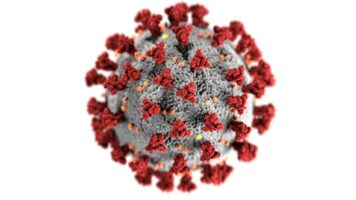If you’ve recently heard someone close to you—a family member, friend, or co-worker—mention a bout with COVID-19, you’re certainly not alone. Across the nation, including the Coastal Bend region, there’s been a noticeable uptick in COVID-19 cases.
Understanding the COVID-19 Cycle
Dr. Eric Baggerman, CEO and pediatrician at Amistad Health, explains that COVID-19 follows a six-month cycle. Typically, there is a surge in cases during the winter and summer months. This pattern has held true in recent years, with increases noted during these periods.
Factors Influencing the Recent Spike
Dr. Baggerman suggests several reasons for the current rise in cases. “Similar to the winter months, summer gatherings in confined spaces or outdoor activities like picnics can facilitate the spread of the virus,” he notes. These social interactions, while enjoyable, can increase the risk of transmission among groups.
The Emergence of a New COVID-19 Sub-Variant
For the past two years, the Omicron variant has been dominant. However, a new sub-variant, referred to as KP.3, has been identified as the primary culprit behind the recent increase. This variant is highly infectious, distinguishing it from its predecessors.
Personal Stories of Impact
Jazlyn Vela shares her personal ordeal, revealing that her sister’s family recently battled with the virus. “My sister, her husband, and their kids were all affected. They were quite sick for about two and a half weeks,” Vela recounts. Despite being vaccinated, the family was surprised and frightened by the recurrence, especially with the children involved. “It’s terrifying when your kids contract COVID, given the unpredictability and the emergence of new strains,” she adds.
A Shift in the Virus’s Threat Level
While the increase in cases is concerning, Dr. Baggerman reassures that the situation is not as perilous as it was when the virus first emerged in 2020. “We’re observing changes typical of viruses over time. It’s becoming a more standard viral behavior,” he clarifies.
Continued Vigilance Recommended
Despite the reduced danger, Dr. Baggerman advises that certain individuals, particularly those with existing health issues or the elderly, should continue to take precautions. “People with chronic conditions, those over 65, or individuals with heart or lung diseases should remain cautious,” he emphasizes.
Current COVID-19 Trends
Nationally, the COVID positivity rate has increased to between 12-13%, with emergency room visits up by 4%. Although more people are contracting the virus, hospitalizations have not surged at the same rate as with previous variants, suggesting a decrease in severity.
Updates on Vaccination
Dr. Baggerman highlights the importance of vaccination in mitigating severe outcomes. “Vaccines have significantly reduced the risk of hospitalization from COVID-19,” he states. The latest vaccine update, the 24-25 COVID-19 vaccine, was approved earlier this month and is expected to be available by September.
Stay Informed and Prepared
As we continue to navigate the evolving landscape of COVID-19, staying informed and adhering to health guidelines remains crucial. By understanding the virus’s patterns and protecting vulnerable populations, we can more effectively manage its impact.

